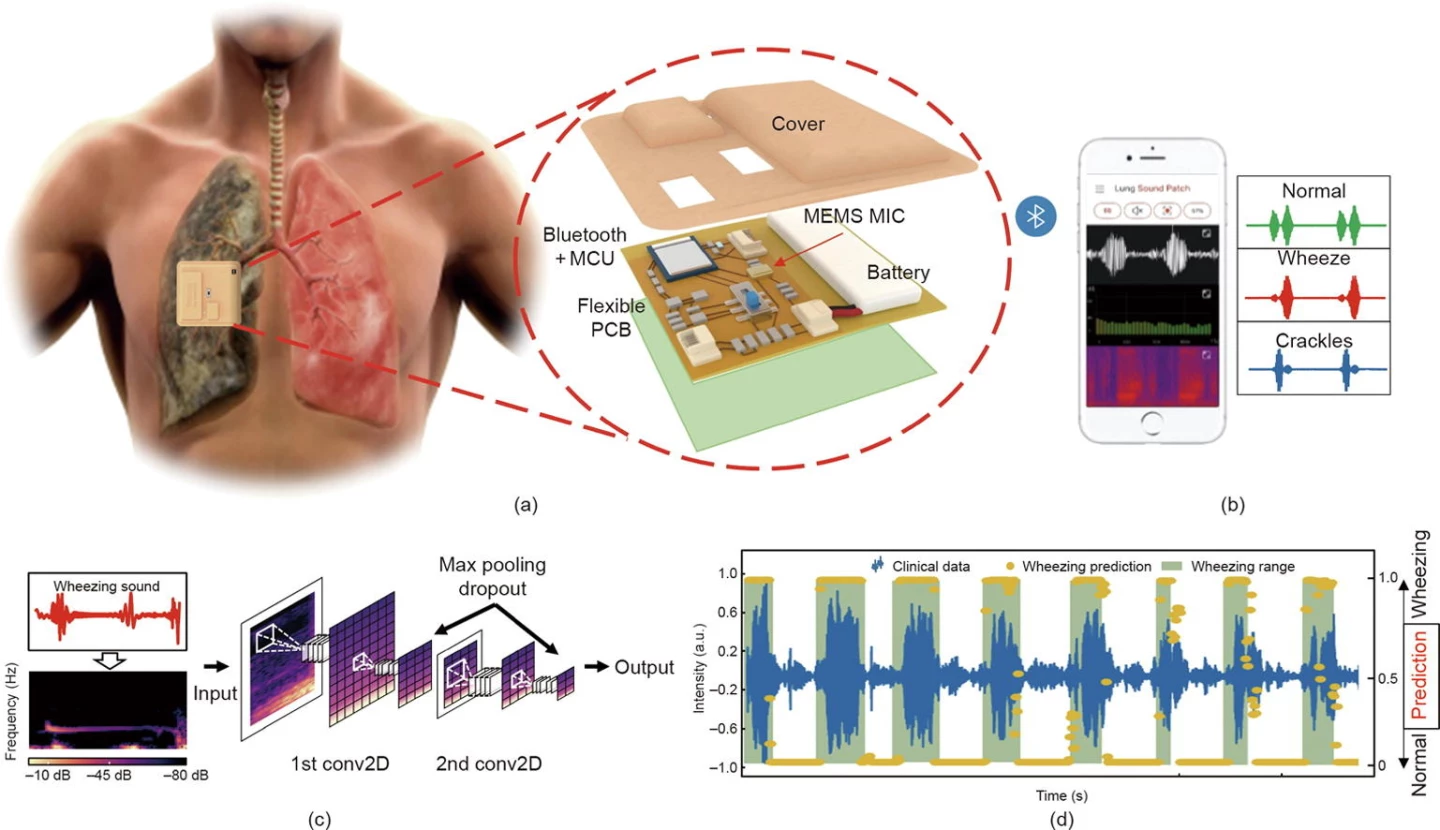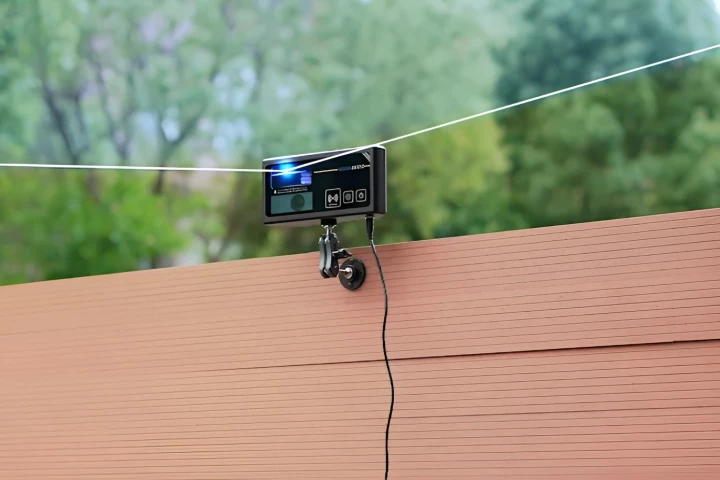While a stethoscope will tell you if someone has a respiratory ailment, it will only share that information in the few minutes it's being used by a trained physician. A new wearable device could paint a much bigger picture of the problem, by monitoring the patient's breathing for days at a time.
Known as the Lung-Sound-Monitoring-Patch (LSMP), the prototype gadget is essentially a stethoscope that's designed to be adhered to the skin for up to five days continuously. It's being developed by a team of researchers led by postdoctoral scientist Kyoung-Ryul Lee, from the Korea Institute of Science and Technology.
The device is just a few millimeters thick, and incorporates components such as a downward-facing unidirectional MEMS microphone, a microcontroller unit, a Bluetooth LE module, a flexible printed circuit board, and a lithium-polymer battery. All of those electronics are encapsulated inside a 3D-printed waterproof body made of a biocompatible resin.

Adhered to the skin on the patient's back (between their spine and one shoulder blade), the device continuously monitors the noises made by the person's lungs and the rest of their airways as they breathe. Those sounds are analyzed in real time using an AI-based algorithm, which was trained on respiratory recordings of both healthy test subjects and of people with a variety of respiratory ailments.
The processed data is wirelessly transmitted to a nearby iPhone running a custom app, which further analyzes, records, and displays the information. Importantly, no doctors, clinicians, or other specially trained personnel need to be on hand for the five days that this is happening – the patient can simply go about their daily life.
The LSMP has so far been tested on two healthy adults, two infants with asthma, and five seniors with COPD.
In all cases, it was able to clearly differentiate between regular breathing and problematic respiratory sounds such as different types of wheezing. It also had no difficulty telling the difference between respiratory and cardiac activity, which it is also capable of monitoring.
The scientists now plan on developing the technology further, which will include boosting its ability to filter out distracting background noises such as those produced by body movements.
A paper on the study was recently published in the journal Engineering.
Source: Higher Education Press via EurekAlert





